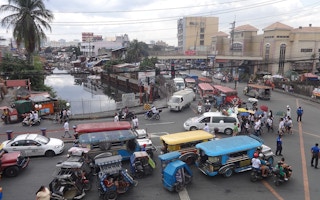Nearly 60 per cent of the world’s 7.7 billion people now live in cities and the number of urban dwellers is rapidly increasing especially in the Asia-Pacific region which will have a profound impact on its economy, society and environment.
In the Asia Pacific region, over 2.3 billion now live in cities. Eight of the world’s ten largest cities are in Asia. They are, in order of most populated to least, Shanghai (24.1 million), Beijing (18.5 million), Karachi (18 million), Dhaka (14.5), Tokyo (13.6 million), Manila (12.8 million), Tianjin (12.7 million), and Mumbai (12.4 million). (1).
These population figures do not include the suburban sprawl that grows out of the core cities. For example, Greater Manila, which includes the satellite cities around the Philippine capital, is estimated at 24 million. As urbanisation proceeds at a rapid pace, six out of ten people in the world are expected to live in cities by 2030, only ten years from now.
“
It is about time that UN planners accept the fact that our planet is only so big, and our population is growing without limits. How about proposing population limits as a UN policy?
Time to plan
Unlike in the past when urban settlements just grew into unplanned cities, it is time that these urban sites are planned and managed.
Otherwise, we suffer the consequences of unplanned growth. Urban planners should now worry about issues including population density, informal settlers, urban decay, public space, public transportation, garbage disposal, air pollution, natural resource management, water conservation, climate change adaptation and mitigation, disaster risk management and rising inequalities.
I live and work on the edge of one of these huge Asian metropolises, Manila. The city has been experiencing “carmageddon” or bumper-to-bumper traffic all day long for the past couple of weeks because of road repairs. It now takes me half-a-day to drive from my small town to Manila, only 65 kilometres away.
I have often visited nearby cities like Bangkok, Hyderabad, Jakarta and Phnom Penh, and I know how it is to deal with urban sprawl, intense air pollution and flooding at the slightest hint of rain because of drainage clogged by garbage. The Indonesian forest fires are not helping any as the smog from these forest fires has reached neighbouring countries like Malaysia, the Philippines, Singapore and Thailand.
Unliveable Asian cities?
I now am asking myself if our cities are becoming unliveable. Is it time to relocate to the countryside, plant gardens, exercise, start breathing fresh air, and live a life minus the traffic, noise and pollution from gas-guzzling engines?
As populations converge in urban areas and cities expand, it is imperative that we plan the growth and make cities sustainable. Public spaces such as parks must be provided by government; the existing ones must be protected from commercial development. The public parks system in American and European cities are good models for Asian governments to imitate.
Waste collection and recycling must be made more efficient. Government must provide more affordable housing. Mass public transportation must be organised and supported by government. Then residents can leave their cars at home and take public transportation to work. We already have models in Hong Kong and Singapore to replicate.
UN Habitat has supported many programmes in Asia to plan and design public spaces in urban neighbourhoods. This gives communities a sense of ownership of public spaces; this results in the positive management of these shared areas. One example of this would be UN Habitat’s collaboration in a development project with the League of Cities of the Philippines and Slum Dwellers International (SDI) and local partners such as universities and NGOs. (2)
It is time to encourage planning of self-contained and self-sufficient urban neighbourhood communities. This model puts the residences near working spaces (offices), commercial areas (shopping malls), recreation facilities (movies and sports) and service areas like schools and hospitals. This minimises travel and eliminates traffic problems.
Another model is to build cities from scratch over a period of time. One example is Putra Jaya, Malaysia’s new federal administrative capital. The country’s third Federal Territory was built on 5,000 hectares of marshland and oil palm estate. The Philippines is planning to build Clark City, a former American military base about 98 kilometres from Manila, as the future economic hub of the country.
Towards the end of making Asia Pacific cities liveable, the Asia Pacific Urban Forum (APUF-7) is organising a conference 15–17 October in Penang, Malaysia with the theme ‘The Future of Asia and Pacific Cities: Transformative Pathways to Achieve the 2030 Agenda for Sustainable Development’. (3)
The conference is aimed at providing insights into “future-proofed urbanisation solutions” with the help of leaders and policymakers from national and local governments, the private sector, researchers and civil society to find answers to the problems of urban living.
You might also like
Planning population limits?
Despite all the good intentions, the APUF will not be able to solve the problems of our unliveable Asian cities overnight. But it would help if the conference instils a sense of urgency, require the practice of urban planning and prevent cities from topsy-turvy growth.
And just as important, it is about time that UN planners accept the fact that our planet is only so big, and our population is growing without limits. How about proposing population limits as a UN policy?
Crispin C. Maslog, former journalist with Agence France-Presse, is an environmental activist and former science professor, Silliman University and University of the Philippines Los Baños, Philippines. He is a founding member and now Chair of the Board, Asian Media Information and Communication Centre, Manila.
This piece was produced by SciDev.Net’s Asia & Pacific desk.
References
1. Sawe, Benjamin Elisha. “The 10 Largest Cities in the World.” World Atlas, 2 November 2018.
2. Urban Planning and Design at UN-Habitat.
3. The future of Asia-Pacific cities, in spotlight at 7th Asia-Pacific Urban Forum, 15 – 17 October 2019, Penang, Malaysia.









